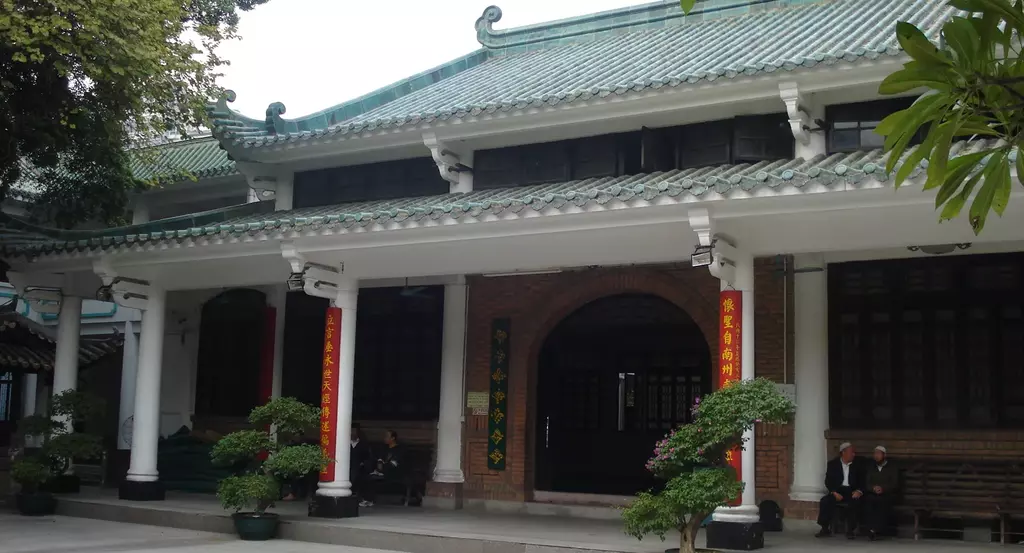Huaisheng Mosque

- The Huaisheng Mosque, also known as the Guangta Mosque, is one of the oldest and most historically significant mosques in China. Located in Guangzhou’s Yuexiu District, the mosque is believed to have been originally built in the 7th century during the Tang Dynasty, making it one of the oldest Islamic places of worship in East Asia. The name Huaisheng means "Remembering the Sage," referring to the Prophet Muhammad, and it is widely believed that the mosque was established by Sa'd ibn Abi Waqqas, an early companion of the Prophet who is said to have introduced Islam to China.
- One of the mosque’s most iconic features is its Guangta (Light Tower), a 36-meter (118-foot) tall minaret, which is uniquely cylindrical rather than the traditional Islamic minaret design. It served as a beacon for maritime traders navigating the Pearl River, helping to guide Muslim merchants who played a key role in Guangzhou’s trade history. The mosque's architecture blends traditional Chinese and Islamic styles, with sloping tiled roofs, wooden lattice windows, and calligraphy inscriptions in both Arabic and Chinese.
- The main prayer hall, a peaceful and sacred space, has undergone multiple renovations over the centuries but retains its spiritual significance for the Muslim community in Guangzhou. The courtyard garden provides a serene setting for worshippers, and the mosque remains an active place of prayer, particularly during Ramadan and Eid celebrations. The mosque complex also houses historical plaques and artifacts that reflect the deep-rooted presence of Islam in China.
- As a symbol of Guangzhou’s multicultural history, the Huaisheng Mosque stands as a testament to the city’s role as an ancient trading hub and a bridge between China and the Islamic world. Today, it continues to attract visitors, including historians, architecture enthusiasts, and Muslim travelers seeking to explore China’s Islamic heritage.
